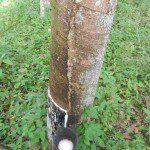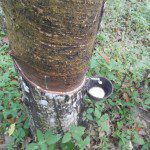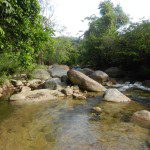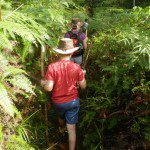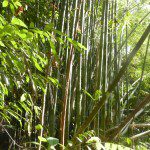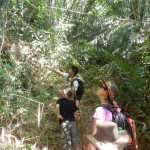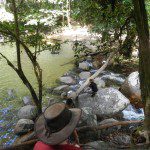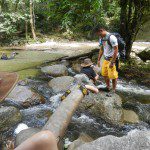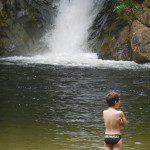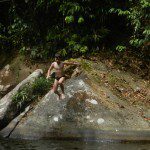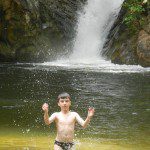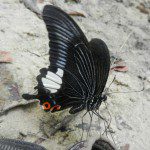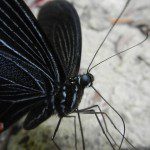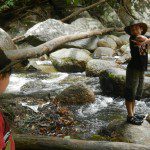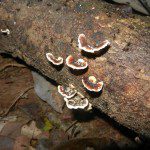Into the Malaysian jungle
In which we enter the deep jungle, negotiate treacherous rapids and jump into waterfalls all to the accompanying sounds of gibbons whooping.
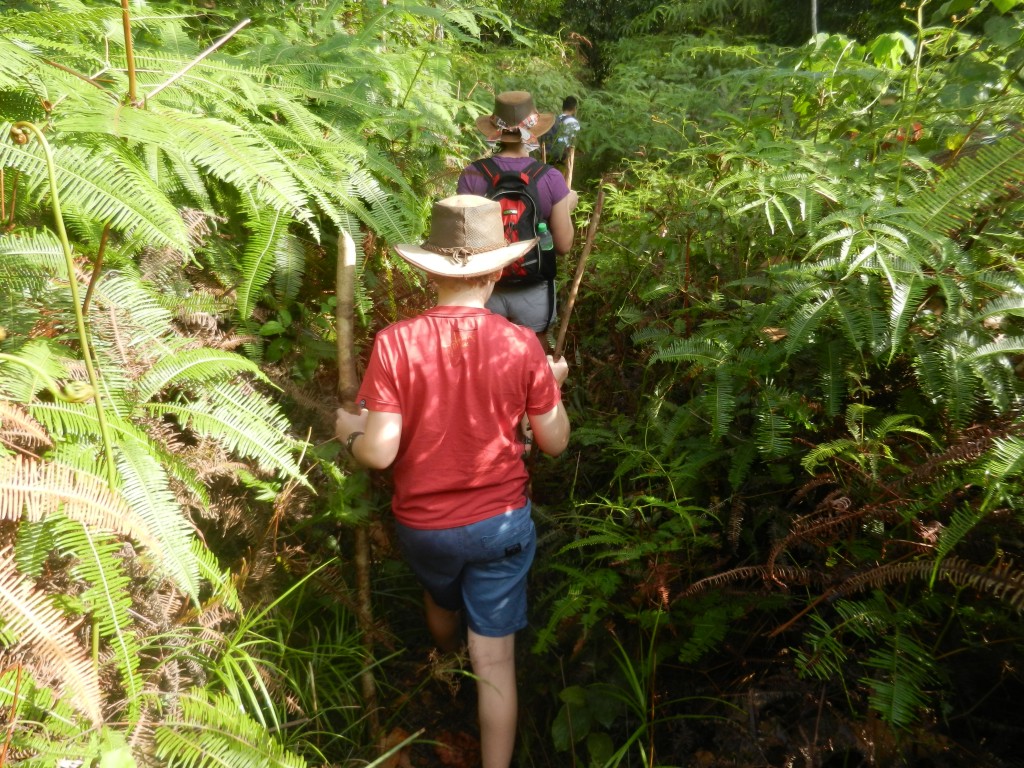 The day started early when we were met by our guide, Kevin, and conveyed to a local establishment to break our fast. Kevin proved to be a young man of Chinese origin who, with a partner, is responsible for Kuala Lumpur’s only adventure guiding company. We had roti for breakfast from a roadside cafe frequented by truckers – the sort of place that we would never have entered had we not had a local with us. The roti proved to be fresh, tasty and filling.
The day started early when we were met by our guide, Kevin, and conveyed to a local establishment to break our fast. Kevin proved to be a young man of Chinese origin who, with a partner, is responsible for Kuala Lumpur’s only adventure guiding company. We had roti for breakfast from a roadside cafe frequented by truckers – the sort of place that we would never have entered had we not had a local with us. The roti proved to be fresh, tasty and filling.
Sadly we were only moments into our repast when it became clear that young master Callum was suffering from the same malady that had brought me so low over the last days. The early stages of an upset stomach and a fever were becoming all too apparent. After some discussion, Callum bravely agreed that we should proceed as planned.
So proceed we did, up into the hills to the East of the city of Kuala Lumpur; soon leaving the buildings behind and entering the wilder Kingdom of Selangor. The roads became ever smaller, until we were bouncing along a tiny mud track with trees scraping at the side of our vehicle. Kevin constantly showed his worth with a stream of friendly chatter and deeply insightful information on all manner of local customs.
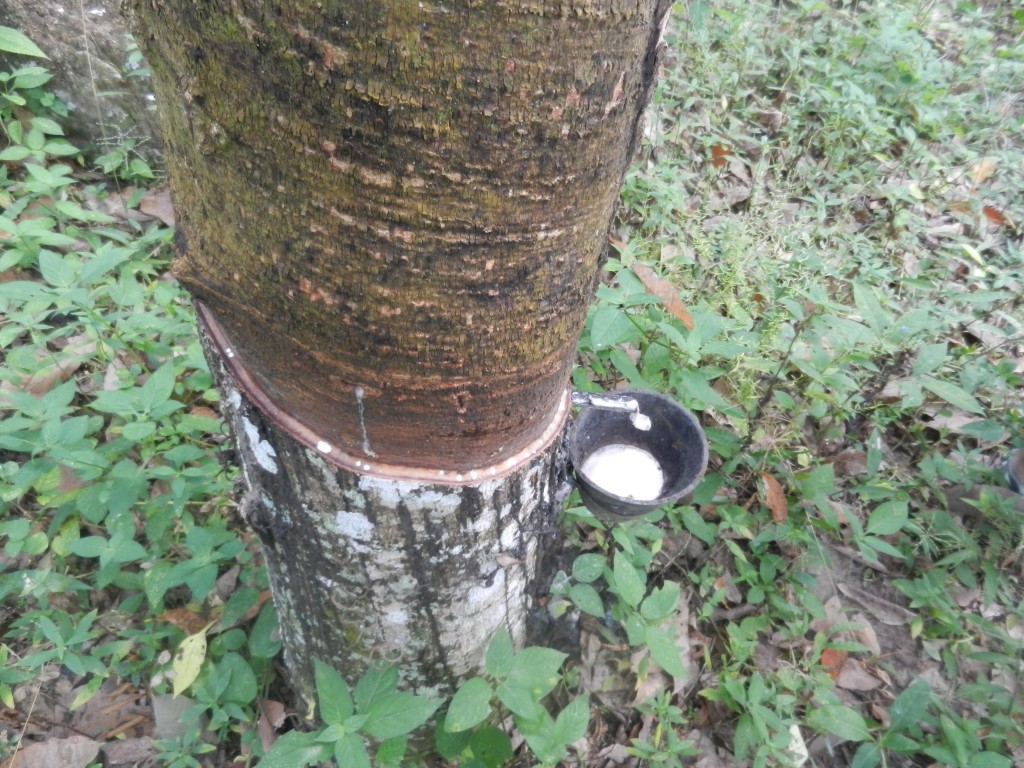 At one point we stopped to inspect a rubber plantation. It was the introduction of rubber trees, stolen from South America, that really put Malaya on the map as an important part of the British Empire. Even today the cultivation of the rubber tree and the harvesting of its amazing white sap is a core part of the Malaysian economy. I was astonished to find that I had completely misconceived the method of harvesting the sap. I had it in my head that the process worked in much the same way that maple syrup is acquired in Canada – by inserting a tap deep into the tree. This, however, is not the case. In fact, a thin, descending scratch is made into one side of the tree and a small cup is placed at its lower end, rubbery sap wells out of the scratch and runs down into the cup. The next day workers come and make another scratch just below the first, and so on. The end result is a tree with scarification all down one side. Sulphuric acid is added to the sap to harden it before it is transported to factories where it is rolled into huge sheets.
At one point we stopped to inspect a rubber plantation. It was the introduction of rubber trees, stolen from South America, that really put Malaya on the map as an important part of the British Empire. Even today the cultivation of the rubber tree and the harvesting of its amazing white sap is a core part of the Malaysian economy. I was astonished to find that I had completely misconceived the method of harvesting the sap. I had it in my head that the process worked in much the same way that maple syrup is acquired in Canada – by inserting a tap deep into the tree. This, however, is not the case. In fact, a thin, descending scratch is made into one side of the tree and a small cup is placed at its lower end, rubbery sap wells out of the scratch and runs down into the cup. The next day workers come and make another scratch just below the first, and so on. The end result is a tree with scarification all down one side. Sulphuric acid is added to the sap to harden it before it is transported to factories where it is rolled into huge sheets.
All around the rubber plantations were fruit farms. Trees were laden with durian, jack fruit, passion fruit and an assortment of other produce. Kevin pointed out that it was possible to tell whether the farm was run by a Chinese Malaysian or an ethnic Malaysian by the state of the up-keep.
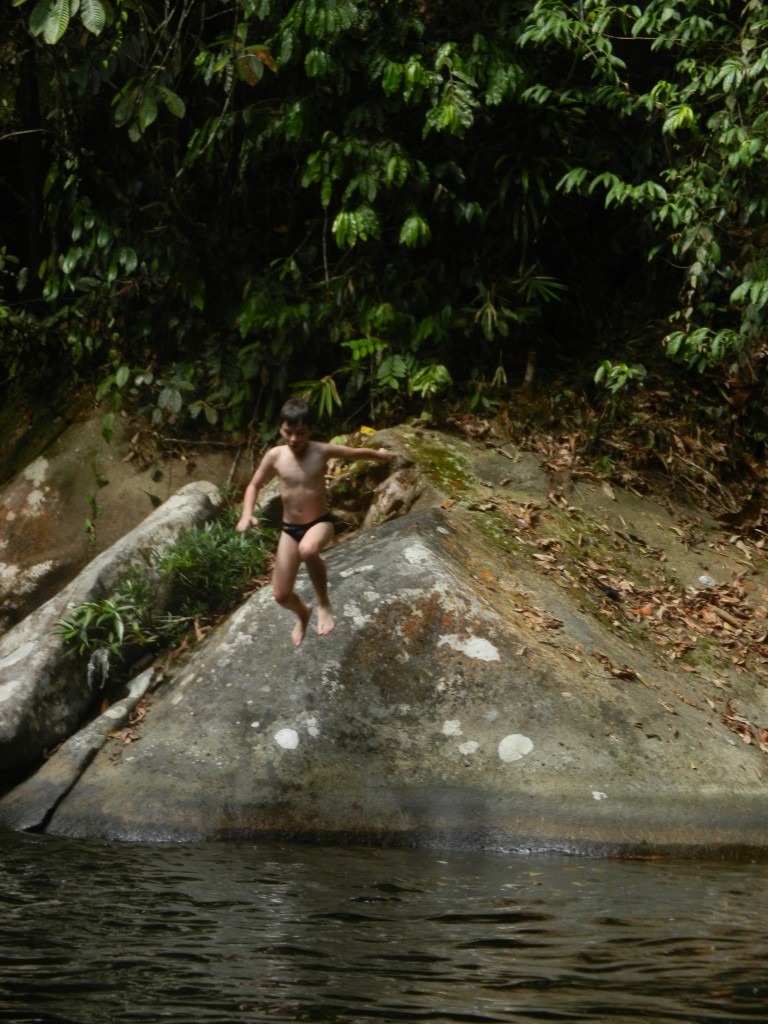
Eventually we came to a halt, disembarked and began our trek into the jungle. Within moments we had waded across a river, selected some stout poles to help our balance and set off down a thickly overgrown track. This first part of the walk was through secondary jungle and so it was deeply thick. To our right was the sound of fast-running water from the nearby river, all around us crickets chirruped and overlaying everything was the whooping call of a troop of gibbons in the trees.
We learnt which plants had edible fruits, which trees could be peeled and used as kindling, how palm fronds are used in roofing and so much more. Kevin proved to be the perfect guide. After a while we entered untouched jungle which was much more open with longer vistas and a far airier feeling. I say untouched only because it was not regrowth. Sadly there were only too many signs that we were not the first to pass along the way. Abandoned bottles, string markers on trees and other refuse were mute testimony to the fact that others came this way and that the ‘leave nothing behind’ ethos has not yet made significant impact in this area.
Callum, I have to say, soldiered through this walk like a true Englishman. He was clearly suffering, but stoically just kept on going in the finest traditions of Far Eastern explorers. It was, in fact, a discussion about stories of colonial explorers and factors dragging their malaria-ridden bodies through jungles just such as this that suggested the approach for this missive.
Finally we climbed down a steep slope and came to a deep pool. In one corner a waterfall crashed into the pool, a small beach fringed the far bank and rounded boulders formed a series of rapids off to the right. It was only moments later that we leapt into the pool for a blessed relief from the ever-present heat and humidity. The water was refreshingly cold and surprisingly clear.
We spent some time jumping from a large rock and from the side of the waterfall down into the pool. Jumping into the white water at the base of the falls was particularly exhilarating. ‘Like jumping into a Champagne bath’ was how Kevin described it.
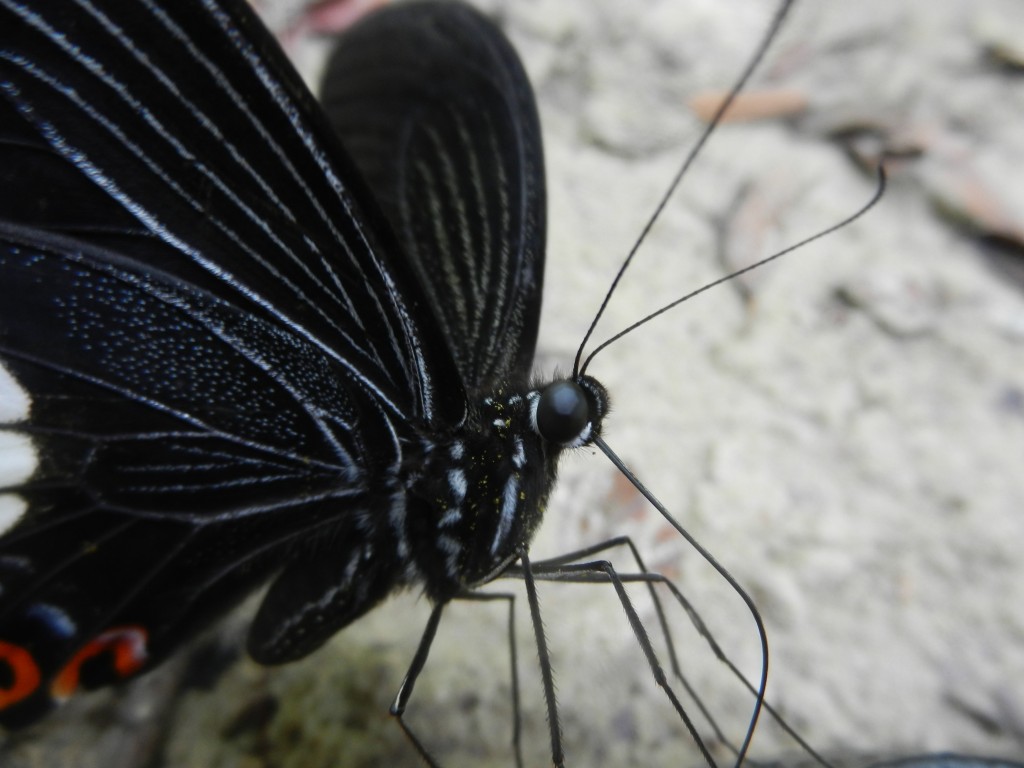 Leaving Callum stretched out for a rest surrounded by large butterflies, the remainder of our party then clambered down a series of rapids and pools. In the rainy season the river flows mightily and the rocks are all rounded smooth in evidence of its power. While the water was now much lower, there was still more than enough flow to make it fun to sit and be massaged by the river. We also entered a small cave and watched a curtain of water flow in front of our faces. It was all extremely entertaining.
Leaving Callum stretched out for a rest surrounded by large butterflies, the remainder of our party then clambered down a series of rapids and pools. In the rainy season the river flows mightily and the rocks are all rounded smooth in evidence of its power. While the water was now much lower, there was still more than enough flow to make it fun to sit and be massaged by the river. We also entered a small cave and watched a curtain of water flow in front of our faces. It was all extremely entertaining.
After a couple of hours we packed up and made out way back through the jungle to the accompaniment of gently falling rain. We were all damp enough that the rain made little difference. Callum, however, managed to move from ‘damp’ to ‘soaked’ when he slipped and fell on the final river crossing. No matter, there was dry clothing awaiting us at our vehicle and a warm meal to be had a way down the road.
Late lunch was in a small kampung or village frequented by Chinese Malaysian farmers. The food was all local and freshly harvested. Kevin proved to be as good a guide to a meal as he was in the jungle. We had the best sweet and sour pork I have ever tasted, crunchy four-corner beans, Malaysian-style Thai tofu and more. Callum even perked up after a glass of Chinese tea. We tried some of the local jack fruit, which tastes a lot like rock-melon and a drink of passion-fruit and plums proved surprisingly excellent.
For dessert we stopped at a small roadside stall manned by an ancient gentleman with a broad smile and no front teeth. The food on offer was apam balik – like a thin, crisp pancake sprinkled with peanuts and sugar. We had not expected Malaysia to be able to cater to our familial obsession with pancakes, but it turned out that the country was able to fulfil even this obscure need.
And so we not only survived our jungle trek, but came away replete and fulfilled.
For those who might some after: we went with Open Sky Unlimited and cannot recommend them highly enough. They were fantastic to deal with in setting up the trip and Kevin was a wonderful guide who did a great job with adults and kids alike. It was also one of the few tours we’ve ever been on that had no hidden extras – all food etc was included in the price.
